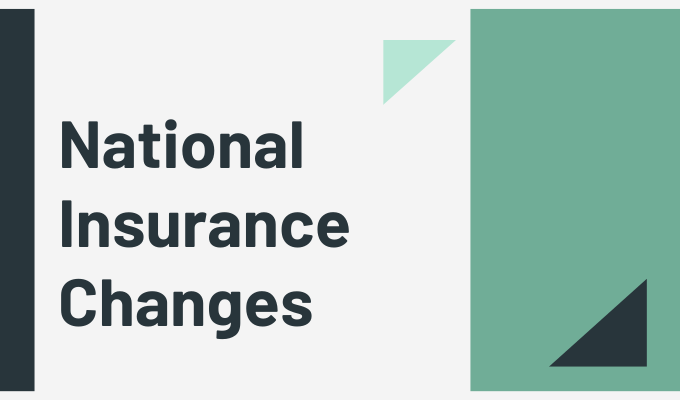Please read this post and get all the information on National Insurance Changes 2025: New NI Changes and How they affect you in 2025.
National Insurance Changes 2025
As we step into 2025, significant changes in National Insurance (NI) rates are on the horizon. Significant adjustments to employee and self-employed NIC rates were made by the National Insurance Contributions (Reduction in Rates) Act 2023, which affected contributions for the 2023–2024 tax year.
In April 2025, UK National Insurance rates will change. National Insurance (NI) is a key part of the UK’s tax system, contributing to state benefits and the NHS. It’s a tax on earnings and self-employed profits, paid by employers, employees, and the self-employed.
Check Payment Dates
Check New Payment Amount
Check Payment Increase News
Check New Eligibility Criteria
In this post, we have discussed in detail about National Insurance Changes 2025, so please maintain with us and get all the recent updates.
What is National Insurance?
To be eligible for some benefits including the state pension, self-employed individuals and workers must pay a predetermined amount of taxes known as national insurance. National Insurance in UK is designed to help workers who required medical attention or had lost their employment, it was first implemented in 1911.

Later, its scope was increased to include funding for the NHS as well as the state pension and other benefits. Contributions are used by the government to pay for state pensions, unemployment insurance, and other public services like the NHS.
If you earn more than a particular amount, which varies based on your job status, all workers from the age of sixteen until retirement age are required to make national insurance contributions.
New NI Changes 2025
Effective April 6, 2025, there was a two percentage point reduction in the primary Employee National Insurance (NI) rate. Class 1 National Insurance Contributions (NICs) are therefore being lowered from 12% to 10% for an employee in the default NI category.
This will save workers with an average income of £35,400 annually £450, and it applies to individuals who make more than £12,570. The amount of £6,396 has been set as the lower earnings limit, which is the point at which workers begin to receive National Insurance credits.
Beginning in April 2025, Class 4 NI for self-employed individuals will drop from 9% to 8%. Furthermore, starting of April2024, self-employed people’s Class 2 NI will no longer exist. Individuals who work for themselves and earn more than £12,570 on that date will no longer be obligated to pay Class 2 NICs; nevertheless, they will still be eligible for contributory benefits.
Commencing on that day, self-employed individuals whose profits exceed £12,570 will also be exempt from Class 2 NIC obligations; however, they will still be eligible for contributing benefits, such as the state pension. Contributory benefits will continue to be available to anyone with profits between £6,725 and £12,570. However, individuals with profits under £6,725 and those who choose to voluntarily pay Class 2 NICs will continue to have that option.
How they affect you in 2025?
This adjustment will only apply to certain NI categories and wages between the £12,570 and £50,270 level, meaning that millions of employees will benefit. The greatest gross savings that may be achieved year would be £754. Taking into account an average yearly salary of £35,400, this implies that employees will benefit by an average of £450 after taxes.
Paystubs from April or April are the most effective and straightforward means, as advised by CIPP, to inform staff members of this change. This may aid your business by lowering the amount of inquiries, so it’s not simply convenient for the staff.
Please don’t panic if your payroll program or payroll supplier hasn’t updated this rate in a timely manner. During the following several months, you will have the opportunity to return any overpayment of NI.
Final Discussion
Many independent contractors and enterprises are appreciative of any assistance they might receive from the government due to the challenges of rising interest rates and inflation. That’s what the National Insurance cutbacks that take effect in 2025 give. However, a variety of factors influence how they specifically impact each employer and independent contractor.
Using a payroll software provider with preparation will prove to be helpful, since the modifications have put small firms to the test in terms of getting their systems ready in time. The sooner systems are integrated, the better, since the Chancellor’s Spring Budget, which is set to be released on April 6, 2025, may include more “benefits/challenges” for small firms.
Thanks a ton for reading this post on National Insurance Changes 2025.


